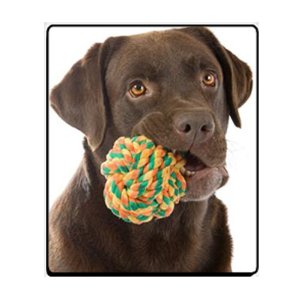In some cases, the owner of an AKC-registered female dog will breed her to a friend’s unproven registered dog of the same breed. Are puppies of such matings likely to be satisfactory canine pets for you? The answer depends on the quality of each of the parents, not the cuteness of the puppies.
If both dogs are fair representatives of their breed, have few hereditary problems, and demonstrate acceptable personalities, their offspring may suit your needs. However, if both parents are quite young when bred, and nothing is known about their ancestors’ qualities, especially conformation and disposition, their litter may not be the one you are looking for! Genetic diseases may be first exhibited after several years of age, and these conditions may be prevalent in both the male and the female bloodlines.
These facts should make you wary of obtaining a backyard-bred puppy. Judicious advice admonishes you to buy soundness in a big dog, not cuteness. Look for the best pup, not the most available one.
Mixed breed and crossbred big dogs
Sometimes, a big dog may be inadvertently bred to a neighborhood fence jumper or a female dog of one large purebred may be purposefully mated with a purebred of another large breed to produce crossbred puppies. What can we predict in such pups? Again, only the puppies in question and the people involved can answer these questions.
Something can be said for the hybrid vigor of mixed-breed pups. Sufficient research has not been done to prove that the offspring of such matings are truly stronger or more vigorous than the progeny of purebreds. Commonsense genetics tells us mixed-breed puppies should have fewer hereditary problems, but the wider gene pool behind them does not assure that these pups will be free of all such problems.
Crossbred offspring conformation is relatively unpredictable on the first mating. If a large purebred female is bred to a large purebred male of another breed, anything is possible, and few assumptions can be made about the variety of appearances or sizes of the puppies until the litter is several weeks or months old. Previous matings of the same two dogs may predict the size of these crossbred puppies.
Often, personalities of mixed-breed and crossbred pups are quite attractive, but are probably less predictable than those of purebreds. Even though individual dispositions may vary, purebred puppies’ characters are likely to be similar to those of their ancestors.
However, if you are not concerned about the actual size or appearance of your big canine partner, and if you find a mixed or crossbred litter, go for it! If the dam is a big dog and the sire is of equal or greater size, the litter has an excellent chance of containing at least a fair percentage of big puppies.
Going To A Backyard Breeder courtesy of Dog Articles.
Looking for a great gift idea? Who wouldn’t love a cutting board showcasing their favorite breed? Check out all of the great doggie gift ideas on Amazon.com –doggieoftheday@amazon.com




